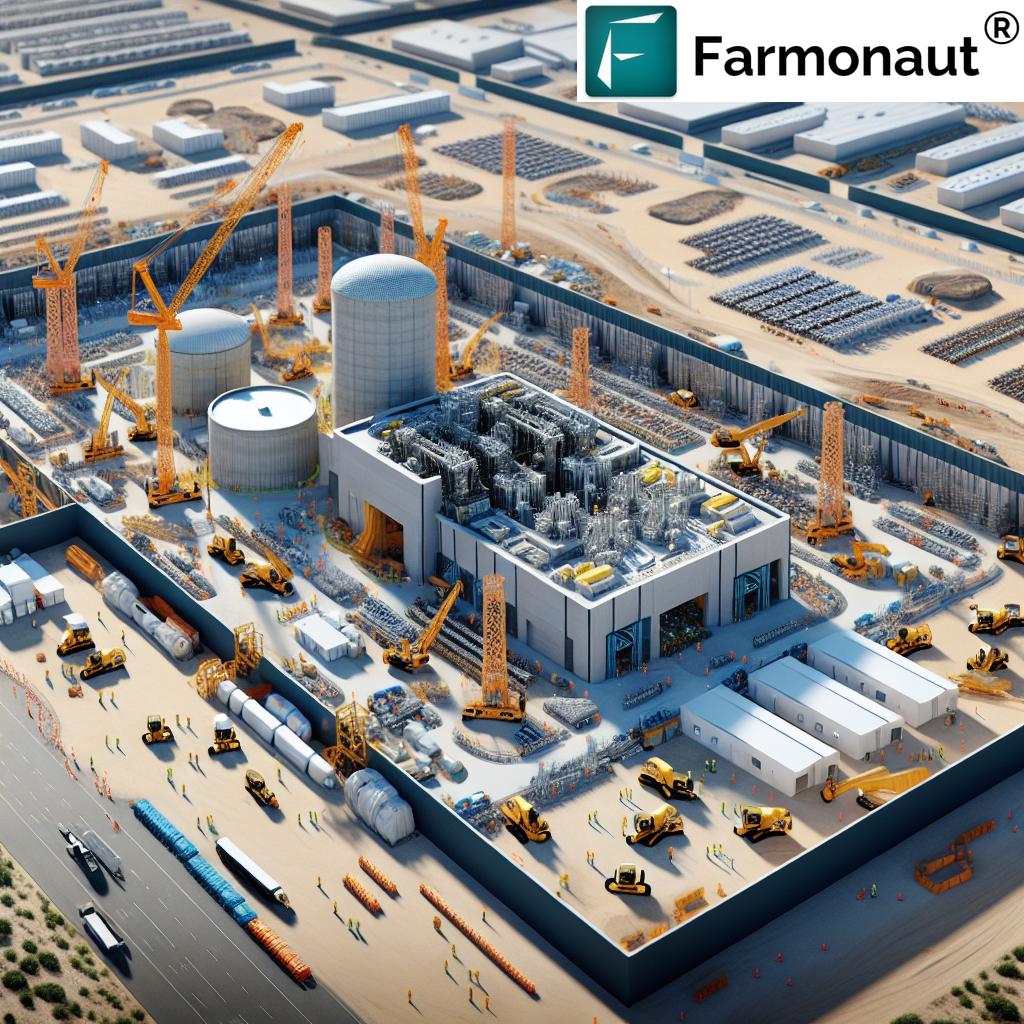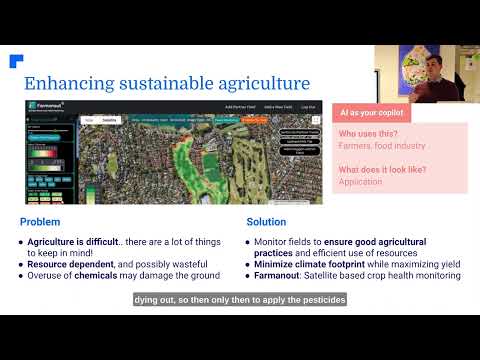UK’s Nuclear Future: Navigating SMR Development Challenges and Mitigating Programme Risks
“The UK’s SMR programme faces challenges in developing first-of-a-kind technology, aiming to balance timely delivery and value for money.”
As we delve into the future of the UK’s nuclear sector, we find ourselves at a crucial juncture where innovation meets challenge. The development of small modular reactors (SMRs) represents a significant leap forward in nuclear technology, promising to revolutionize the way we approach energy production. However, this path is not without its hurdles. In this comprehensive analysis, we’ll explore the intricate landscape of the UK’s nuclear future, focusing on the SMR programme’s development challenges and the strategies being implemented to mitigate associated risks.
The Promise of Small Modular Reactors
Small modular reactors represent a new frontier in nuclear energy production. These compact, scalable units offer several advantages over traditional large-scale nuclear plants:
- Reduced construction time and costs
- Enhanced safety features
- Flexibility in deployment
- Potential for decentralized energy production
However, as with any groundbreaking technology, the development and implementation of SMRs come with their own set of challenges.

Great British Nuclear: Steering the SMR Programme
At the helm of this ambitious endeavor is Great British Nuclear (GBN), the organization tasked with driving forward the UK’s SMR programme. In their inaugural 2024 Annual report and accounts for the 2023/2024 financial year, GBN has laid out a comprehensive overview of the challenges they face and the strategies they’re employing to overcome them.
Gwen Parry-Jones, CEO of GBN, acknowledges the complexities inherent in this undertaking: “The UK’s nuclear sector has had some well-documented challenges, ones that GBN has been set up to navigate. SMRs have not yet been deployed anywhere at scale and their first-of-a-kind (FOAK) nature presents unique considerations and complex challenges for us to overcome.”
This statement underscores the pioneering nature of the work being undertaken and the need for innovative approaches to problem-solving.
Key Risks and Mitigation Strategies
The annual report outlines several “principal risks” facing the SMR programme, along with key mitigation measures. Let’s examine these in detail:
| Risk Category | Specific Risks | Mitigation Strategies |
|---|---|---|
| Funding and Financing |
– Insufficient funding to resource and deliver the programme – Changes in government policy or budgetary priorities – Market conditions affecting funding – External events impacting public sentiment |
– Diversifying funding sources – Regular engagement with government stakeholders – Robust financial planning and contingency measures – Transparent communication to maintain public trust |
| Regulatory Approval |
– Delays in obtaining necessary regulatory approvals – Evolving regulatory landscape |
– Early and continuous engagement with regulatory bodies – Comprehensive preparation of regulatory submissions – Flexibility in design to accommodate regulatory requirements |
| Technology Maturity |
– First-of-a-kind (FOAK) nature of SMR technology – Potential failure to meet strategic objectives |
– Rigorous assessment through SMR competition – Selection of reserve contractor as contingency – Predetermined exit points for non-performing projects |
| Site Readiness |
– Challenges in site preparation and infrastructure – Environmental and local community concerns |
– Early site assessment and preparation – Community engagement and transparent communication – Collaboration with local authorities and stakeholders |
| Cyber Threats |
– Potential cyber attacks on nuclear infrastructure – Data security risks |
– Implementation of robust cybersecurity measures – Regular security audits and updates – Staff training on cybersecurity best practices |
| Project Timelines |
– Ambitious programme schedule – Potential delays in various stages of development |
– Realistic timeline planning with built-in contingencies – Regular progress monitoring and reporting – Adaptive project management approach |
1. Technology Maturity
The first-of-a-kind (FOAK) nature of SMR technology presents a significant challenge. There’s a risk that providers may not be able to meet strategic objectives, including timely delivery, value for money, and obtaining regulatory approval. This could potentially delay approval timelines, affect project milestones, or even cause an SMR project to fail.
To mitigate this risk, GBN is implementing a competitive assessment process for SMR technologies. Additionally, they’re maintaining the option to select a “reserve contractor” as a contingency against a provider failing to meet agreed standards. This approach demonstrates a commitment to flexibility and risk management in the face of technological uncertainties.
2. Programme Timeline
The ambitious timeline set for the SMR programme poses another significant challenge. Balancing the need for rapid development with the complexities of nuclear technology requires careful planning and execution.
GBN is addressing this by implementing rigorous project management practices and maintaining flexibility in their approach. They’ve also included predetermined exit points in their planning, allowing for strategic withdrawal from projects that exceed cost estimates or stretch beyond acceptable timelines.
3. Funding and Financing
The report highlights the risk of insufficient funding to resource and deliver the programme according to the planned timetable. This could be triggered by changes in government policy, budgetary priorities, market conditions, or external events affecting public sentiment towards nuclear safety.
To mitigate this risk, GBN is likely exploring diverse funding sources and maintaining open communication channels with government stakeholders. They’re also emphasizing the importance of public engagement to maintain support for nuclear energy initiatives.
4. Regulatory Approval
Obtaining regulatory approval for new nuclear technologies is a complex and time-consuming process. The novel nature of SMRs may present additional challenges in this regard.
GBN is addressing this by working closely with regulatory bodies from the early stages of development. They’re also ensuring that their SMR designs are flexible enough to accommodate potential regulatory requirements.
5. Site Readiness
Preparing sites for SMR deployment involves numerous technical, environmental, and social considerations. Ensuring site readiness while managing local stakeholder concerns is crucial for the programme’s success.
GBN is likely implementing comprehensive site assessment processes and engaging with local communities to address concerns and build support for SMR projects.
6. Cyber Threats
As with any critical infrastructure, nuclear facilities must be protected against cyber threats. The digital components of SMRs may present new vulnerabilities that need to be addressed.
GBN is undoubtedly implementing robust cybersecurity measures and conducting regular assessments to ensure the integrity and security of their systems.
“Great British Nuclear’s annual report outlines strategies to mitigate risks in nuclear project funding, regulatory approval, and technology maturity.”
Strategic Objectives and Competitive Process
GBN’s approach to SMR development is grounded in a competitive process designed to assess and select the most promising technologies. This strategy serves multiple purposes:
- Ensuring value for money by fostering competition among providers
- Mitigating technology risks by thoroughly evaluating each proposal
- Maintaining flexibility in project execution
The report suggests that GBN plans to select two vendors to deliver one SMR each. However, recent reports indicate that this plan may be subject to change, with potential spending cuts at GBN being considered as part of the upcoming Spending Review.

Adaptability and Resilience
A key theme that emerges from GBN’s approach is the emphasis on adaptability and resilience. As Gwen Parry-Jones states, “I am committed to ensure that GBN is an adaptable and resilient organisation that is flexible and evolves as conditions change, but with our eyes always firmly fixed on the future to deliver our long-term mission and value for the UK.”
This commitment to flexibility is crucial in navigating the complex landscape of nuclear technology development. It allows GBN to respond to changing circumstances, whether they be technological breakthroughs, regulatory shifts, or alterations in the political or economic environment.
The Role of SMR Development Companies (DevCos)
An interesting aspect of GBN’s strategy is the plan to establish SMR development companies (DevCos) to take the projects forward. These entities will likely play a crucial role in managing the specific challenges associated with each SMR project, allowing for more focused and efficient project management.
The creation of DevCos also suggests a commitment to long-term development and potentially opens up opportunities for private sector involvement in the UK’s nuclear future.
The Broader Context: UK’s Nuclear Sector Challenges
While the report focuses on the SMR programme, it’s important to consider the broader context of the UK’s nuclear sector. The industry has faced significant challenges in recent years, including:
- Cost overruns and delays in large-scale nuclear projects
- Changing energy market dynamics
- Public perception and safety concerns
- Competition from renewable energy sources
The development of SMRs is, in part, a response to these challenges. By offering a more flexible, scalable, and potentially more cost-effective alternative to traditional large-scale nuclear plants, SMRs could play a crucial role in revitalizing the UK’s nuclear sector.
International Context and Collaboration
The UK’s SMR programme doesn’t exist in isolation. Several countries, including the United States, Canada, and Russia, are also pursuing SMR development. This international context presents both opportunities and challenges:
- Potential for international collaboration and knowledge sharing
- Competition in the global market for SMR technology
- Need to align with international safety standards and regulations
GBN’s strategy will likely involve engaging with international partners and staying abreast of global developments in SMR technology.
Environmental and Sustainability Considerations
As the world grapples with the challenges of climate change, the role of nuclear energy in a low-carbon future is a topic of ongoing debate. SMRs have the potential to contribute significantly to reducing carbon emissions, but their development must also consider broader environmental impacts.
GBN’s approach to environmental sustainability and its plans for managing nuclear waste from SMRs will be crucial factors in the programme’s long-term success and public acceptance.
Public Engagement and Stakeholder Management
The success of the UK’s SMR programme will depend not only on technological and regulatory achievements but also on public support. GBN’s strategies for engaging with local communities, addressing safety concerns, and communicating the benefits of SMR technology will be critical.
Transparent communication about both the potential benefits and the challenges of SMR development will be essential in building and maintaining public trust.
Economic Impact and Job Creation
The development of a robust SMR industry in the UK has the potential to create significant economic benefits, including:
- Job creation in high-tech industries
- Export opportunities for UK-developed SMR technology
- Stimulation of associated industries and supply chains
GBN’s plans for maximizing these economic benefits while managing the risks associated with such a large-scale industrial programme will be of great interest to policymakers and the public alike.
The Road Ahead: Challenges and Opportunities
As we look to the future of the UK’s SMR programme, it’s clear that the road ahead is both challenging and full of potential. The success of this initiative could have far-reaching implications for the UK’s energy security, its role in the global nuclear industry, and its efforts to combat climate change.
Key areas to watch in the coming years include:
- Progress in regulatory approvals for SMR designs
- Developments in funding and financing mechanisms
- Advancements in SMR technology and manufacturing processes
- Public perception and support for nuclear energy
- Integration of SMRs into the UK’s broader energy strategy
Conclusion: Navigating the Future of Nuclear Energy
The UK’s journey towards developing and deploying small modular reactors is a complex and ambitious undertaking. It represents a significant opportunity to reshape the country’s energy landscape and position the UK as a leader in advanced nuclear technology.
Great British Nuclear’s approach, as outlined in their annual report, demonstrates a clear-eyed understanding of the challenges ahead and a commitment to adaptability and resilience. By addressing key risks head-on and maintaining flexibility in their strategies, GBN is laying the groundwork for a robust and sustainable SMR programme.
As we move forward, continued transparency, stakeholder engagement, and a focus on innovation will be crucial in navigating the challenges and realizing the potential of SMRs. The success of this programme could not only transform the UK’s energy sector but also contribute significantly to global efforts in combating climate change and ensuring energy security.
The road ahead may be challenging, but with careful planning, strategic risk management, and a commitment to innovation, the UK’s nuclear future looks promising indeed.
FAQs
- What are small modular reactors (SMRs)?
SMRs are advanced nuclear reactors that are smaller in size and capacity compared to conventional nuclear power plants. They are designed to be manufactured in factories and transported to sites for assembly, offering potential benefits in terms of cost, flexibility, and safety. - Why is the UK pursuing SMR development?
The UK is pursuing SMR development as part of its strategy to achieve net-zero carbon emissions, enhance energy security, and position itself as a leader in advanced nuclear technology. - What are the main challenges in SMR development?
Key challenges include technology maturity, regulatory approval, funding and financing, site readiness, and public acceptance. - How is Great British Nuclear (GBN) addressing these challenges?
GBN is implementing a competitive assessment process, maintaining flexibility in project execution, engaging with regulatory bodies, and focusing on adaptability and resilience in their approach. - What is the timeline for SMR deployment in the UK?
While specific timelines may vary, the UK government aims to have the first SMRs operational by the early 2030s.
Earn With Farmonaut: Affiliate Program
Earn 20% recurring commission with Farmonaut’s affiliate program by sharing your promo code and helping farmers save 10%. Onboard 10 Elite farmers monthly to earn a minimum of $148,000 annually—start now and grow your income!
Farmonaut API: Satellite and Weather Data API
API Developer Docs: Farmonaut API Documentation







